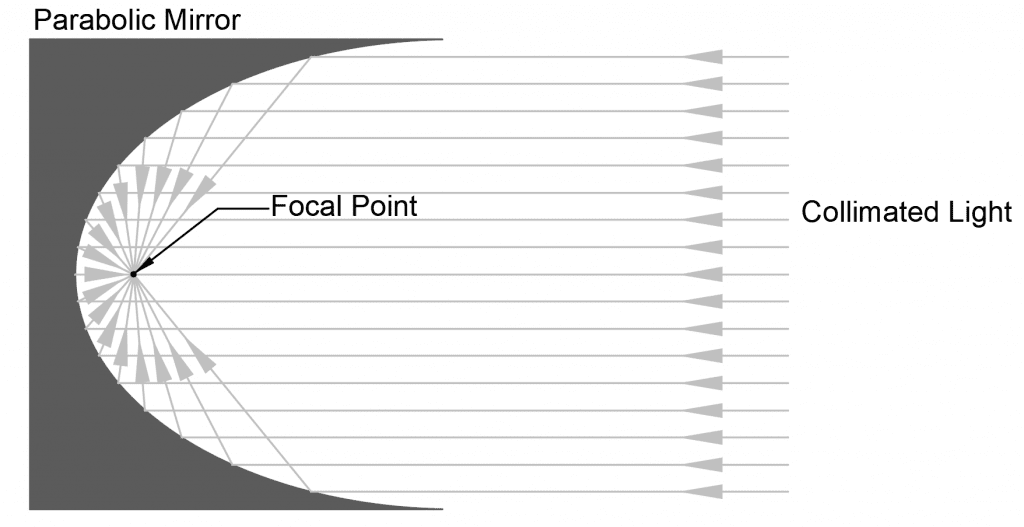Key Takeaways
- The main difference between parabolic and spherical mirrors lies in their ability to focus light.
- Spherical mirrors come in concave and convex types, reflecting images differently due to their curvature.
- Parabolic mirrors are more expensive to manufacture and generally larger in physical size compared to spherical mirrors.
- Avantier offers both off-axis parabolic mirrors and spherical mirrors, customized to meet specific optical requirements.
Understanding The Difference Between Parabolic And Spherical Mirror
Spherical mirrors come in two types: concave and convex. While they have better light collection capabilities compared to planar mirrors, they suffer from astigmatism. This phenomenon results in light emitted from a point source not converging to a single point due to a shift in focal length.
On the other hand, parabolic mirrors are a type of aspheric mirror that efficiently converts divergent light from a point source into collimated (parallel) light. They outperform regular spherical concave mirrors in extracting collimated light. They excel at focusing incident light precisely onto a single point, making them highly effective in certain applications, such as high-brightness lamp houses for microscopes. These mirrors are sometimes known as off-axis parabolic mirrors (OAP mirrors).


Factors Influencing the Choice Between Parabolic and Spherical Mirrors
However, choosing between a parabolic mirror and a spherical mirror depends on several factors. Factors like beam diameter, cost constraints, space limitations, and performance requirements play a significant role in making the appropriate choice. For smaller beam diameters, the performance difference between parabolic and spherical mirrors becomes less pronounced. Moreover, parabolic mirrors are generally more expensive to manufacture due to their complex reflective surfaces and are usually larger in physical size compared to spherical mirrors. Therefore, the performance improvement may or may not be significant enough to justify the higher cost and larger size.
Parabolic mirrors excel over spherical mirrors when it comes to collimating light from a point source or focusing collimated light. For instance, it can accurately focus incident light, which is collimated, to a diffraction-limited spot. Conversely, a spherical mirror can only focus collimated light to a spot with a volume larger than the diffraction-limited spot. To reduce the focal volume of it, one can decrease the diameter of the collimated incident beam.
Optimal Mirror Selection for Optical Applications
In conclusion, the choice between parabolic and spherical mirrors hinges on the specific requirements of the application, taking into account factors such as beam diameter, cost, space limitations, and desired performance outcomes. Each type of mirror has its strengths and weaknesses, making them suitable for different scenarios in optical applications.
Avantier’s Off-Axis Parabolic Mirrors feature precise collimation and focusing, compact design, accessible focal point, and customized coating options like protected gold, silver, and aluminum. With diamond-turned surfaces and easy selection based on off-axis angle and focal length, they ensure high-performance and versatility for various optical applications.
Spherical mirrors have a flat back surface and a reflective aluminum coating, ideal for optical systems in various applications. Spherical lenses are of two types: concave and convex, reflecting images differently due to their curvature. Avantier offers 20 years of experience in high precision manufacturing of these lenses and mirrors, providing customized services for clients’ specific requirements, from planning to inspection and reporting.
Contact us today if you’d like to discuss a custom order for an optical mirror with your needs.
GREAT ARTICLE!
Share this article to gain insights from your connections!




